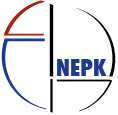

(Hermann Wittig 1819–1891 (active in Berlin, later Rome), 1876, bronze, struck, 41 mm, NEPK2404)
Diedrich Uhlhorn (1764-1837) from Grevenbroich was a self-made engineer; amongst others he designed textile machines in the service of the Duke of Oldenburg. Being requested by the Düsseldorf Mint to repair its screw press, he offered to design a new machine, faster and more reliable than the screw press. This resulted in the toggle lever press, which he patented in 1817. The introduction of this press completed the mechanisation process of coin making, started in France and England around 1785. The press featured a flywheel that moved the toggle lever and had a mechanism for introducing the blanks and one for removing the newly struck coins, all driven by the machine itself. Coins were struck “in the ring”. Uhlhorn’s first foreign commission for the machine came from the Utrecht Mint and consisted of four presses (1821). In the 1850-ies the Utrecht Mint ordered another 25 presses, in view of the large minting for the Netherlands East Indies. This proved to be the largest commission in Uhlhorn’s history. Besides over 200 presses by Uhlhorn, more than 300 were made by licensees. For the technical aspects of the Uhlhorn press, see De Beeldenaar-36(2012), 5, p. 196-206 (article in Dutch). See also the entry Uhlhornpress in the Encyclopedie voor Munten en Papiergeld: http://wiki.muntenenpapiergeld.nl/index.php?title=Uhlhornpers
Obverse: Joined portraits of Heinrich and Diedrich Uhlhorn
Text obverse: HEINRICH UHLHORN GEB: 25. NOVEMBER 1805 D: UHLHORN GEB: 3. JUNI 1764 + 5. OCT: 1837
Tekst reverse: DIED. UHLHORN ERFAND 1817 D. MÜNZMASCHINE M. HEBELDRUCK ZUR VOLLENDUNG DER 200. MÜNZMASCHINE DURCH H. UHLHORN 1876
Note: the NEPK collection received the medal as a donation from a German collector specialising in medals on minting techniques.





